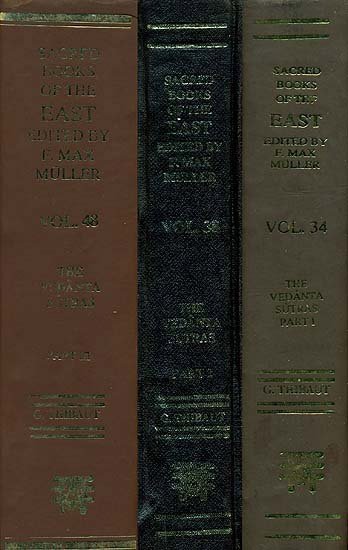Brahma Sutras (Ramanuja)
by George Thibaut | 1904 | 275,953 words | ISBN-10: 8120801350 | ISBN-13: 9788120801356
The English translation of the Brahma Sutras (also, Vedanta Sutras) with commentary by Ramanuja (known as the Sri Bhasya). The Brahmasutra expounds the essential philosophy of the Upanishads which, primarily revolving around the knowledge of Brahman and Atman, represents the foundation of Vedanta. Ramanjua’s interpretation of these sutras from a V...
Sutra 2.4.5
5. But the hands and so on also; (since they assist the soul) abiding (in the body). Hence (it is) not so.
The organs are not seven only, but eleven, since the hands and the rest also contribute towards the experience and fruition of that which abides in the body, i.e. the soul, and have their separate offices, such as seizing, and so on. Hence it is not so, i.e. it must not be thought that the hands and the rest are not organs. Buddhi, ahankāra and citta, on the other hand, are(not independent organs but) mere designations of the manas, according as the latter is engaged in the functions of deciding (adhyavasāya), or misconception (abhimāna, or thinking (cintā). The organs therefore are eleven. From this it follows that in the passage 'Ten are these prāṇas in man, and Ātman is the eleventh'(Bṛ. Up. II, 4, ii), the word Ātman denotes the manas. The number eleven is confirmed by scriptural and Smṛti passages, cp. 'the ten organs and the one' (Bha. Gī. XIII, 5); 'ten are the vaikārika beings, the manas is the eleventh,' and others. Where more organs are mentioned, the different functions of the manas are meant; and references to smaller numbers are connected with special effects of the organs, such as accompanying the soul, and the like.—Here terminates the adhikaraṇa of 'the going of the seven.'
